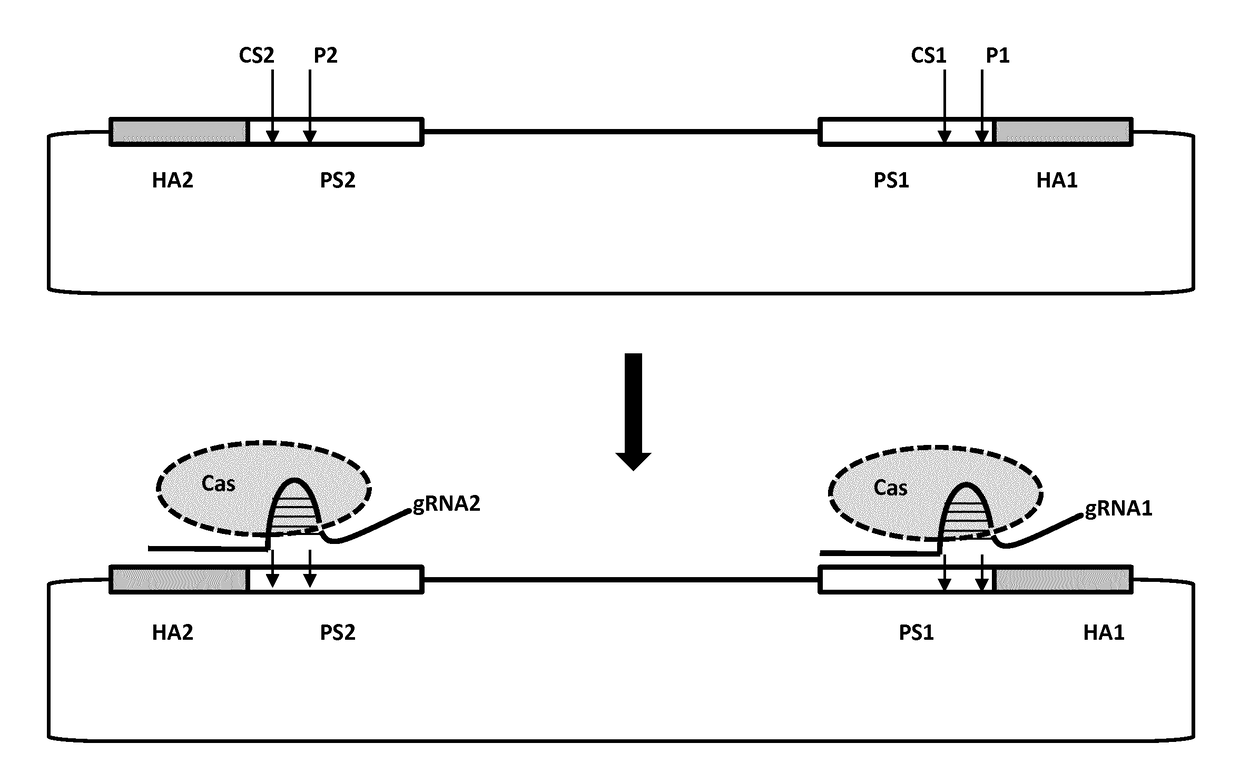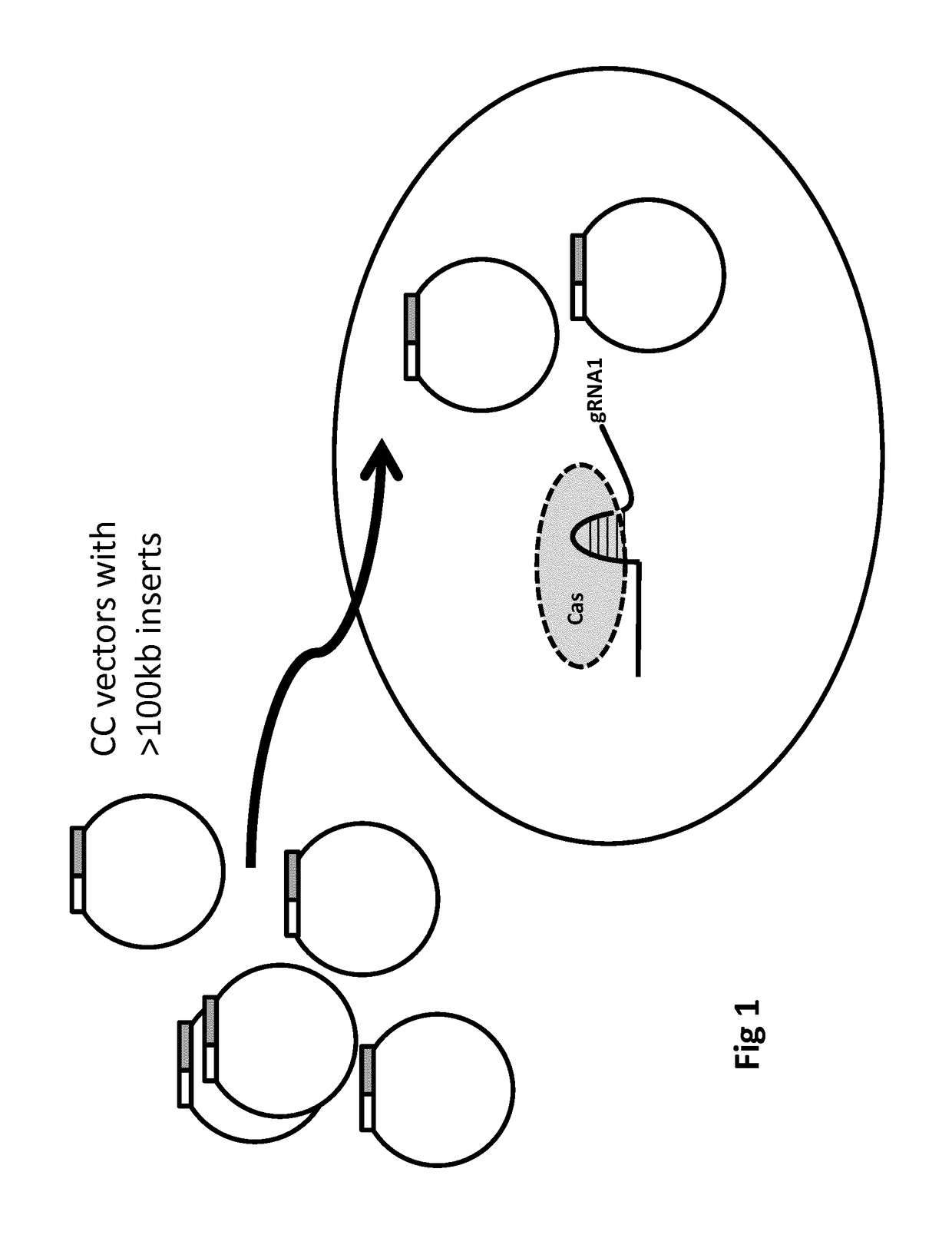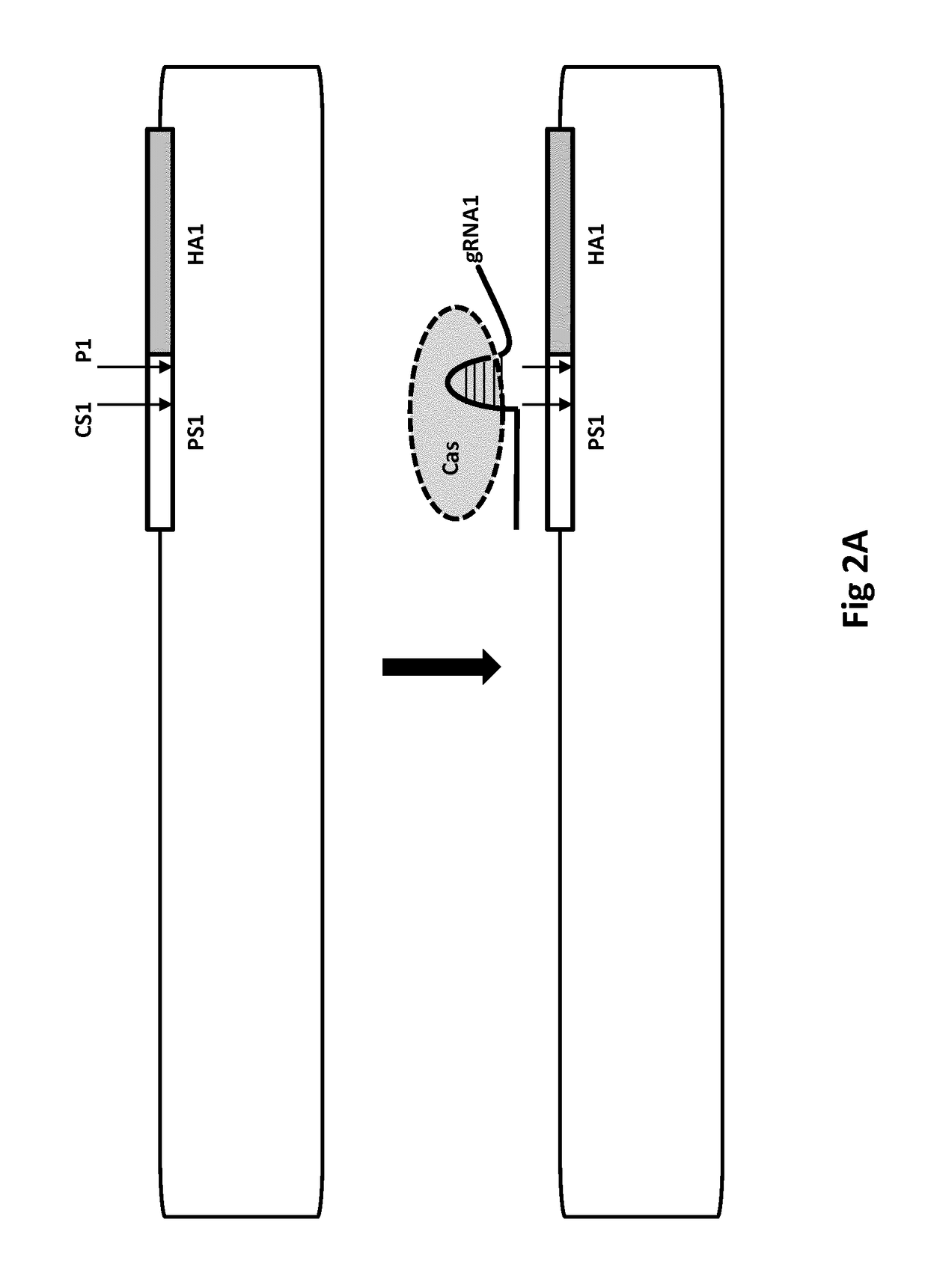Recombinogenic nucleic acid strands in situ
a nucleic acid strand and recombination technology, applied in the field of recombinogenic nucleic acid strands in situ, can solve the problems of limited use of cas-based techniques, limited application prospects, and difficult to achieve in practice, so as to promote cell toxin activity and reduce cell growth or proliferation.
- Summary
- Abstract
- Description
- Claims
- Application Information
AI Technical Summary
Benefits of technology
Problems solved by technology
Method used
Image
Examples
example 1
Closed Circular Vectors with In Situ Cas Cutting in Eukaryotic Cells for Exchange of Large Nucleotide Sequences—Human Cell Gene Therapy Application
[0880]This can be described by way of the following possible gene therapy procedure. An aspect is illustrated (FIG. 1) and can be carried out by constructing a population of closed circular vectors, such as DNA BACs, wherein the population comprises supercoiled vectors. To enable positive-negative selection, the vectors each can comprise a hygromycin resistance gene in the vector backbone and a HPRT gene as described below. The circular vectors can be engineered to comprise homology arms and S pyogenes Cas9 cutting sites (ie, HA2, PS2, CS2, P2, PS1, CS1, P1, HA1 as described herein). PS1 and PS2 will be identical, as will be P1 and P2 (each being a TGG sequence), thereby enabling CS1 and CS2 both to be cut by Cas9. A sequence encoding a single (chimaeric) guide RNA (gRNA1) will be included in the vectors. CS1 will be 10 nucleotides away f...
example 2
c Methods Harnessing Endogenous Cas Nucleases
[0884]This can be described by way of the following possible procedure. This aspect can be carried out by constructing a population of engineered phagemids that are capable of infecting an undesirable S pyogenes bacterial population. The phage genomes are engineered to comprise homology arms and S pyogenes Cas9 cutting sites (ie, HA2, PS2, CS2, P2, PS1, CS1, P1, HA1 as described herein). PS1 and PS2 will be identical, as will be P1 and P2 (each being a TGG sequence), thereby enabling CS1 and CS2 both to be cut by Cas9. A sequence encoding a single (chimaeric) guide RNA (gRNA1) will be included in the genomes. CS1 will be 10 nucleotides away from HA1 and CS2 will be 10 nucleotides away from HA2. HA1 and HA2 together can comprise 3 kb of nucleotide sequence. Cas9 cutting, therefore can produce cut phage genomes in which a sequence joining HA1 and HA2 will be cut out, whereby the cut joining sequences are excised from phage vectors. The resu...
example 3
rmats
[0888]FIGS. 2A& B show a single-arm vector for use in the present invention. The homology arm HA1 is at least 100 kb in length and is at least 90% identical to a target sequence NS1 in a target nucleic acid. As shown, Cas cutting in the presence of a guide RNA (gRNA1) produces a recombinogenic end that is close (less than 250 nt) away from HA1, which is useful for efficient HR with the target. HR can be used, for example, to insert into the target nucleic acid a SNP or PAM site contained in HA1. HR can be used to insert a vector sequence outside HA1, for example, where the sequence is within 100 nt of HA1 for maximising the chances of HR insertion into the target.
[0889]FIG. 3A shows a variation where a circular vector comprises two Cas cutting sites (eg, for use as a retrieval vector to or an insert vector according to the invention). Cutting can be with different gRNAs (as shown) or the same gRNA. Also cutting can be with two different Cas nucleases (used simultaneously or seq...
PUM
| Property | Measurement | Unit |
|---|---|---|
| length | aaaaa | aaaaa |
| genetic defect | aaaaa | aaaaa |
| sizes | aaaaa | aaaaa |
Abstract
Description
Claims
Application Information
 Login to View More
Login to View More - R&D
- Intellectual Property
- Life Sciences
- Materials
- Tech Scout
- Unparalleled Data Quality
- Higher Quality Content
- 60% Fewer Hallucinations
Browse by: Latest US Patents, China's latest patents, Technical Efficacy Thesaurus, Application Domain, Technology Topic, Popular Technical Reports.
© 2025 PatSnap. All rights reserved.Legal|Privacy policy|Modern Slavery Act Transparency Statement|Sitemap|About US| Contact US: help@patsnap.com



